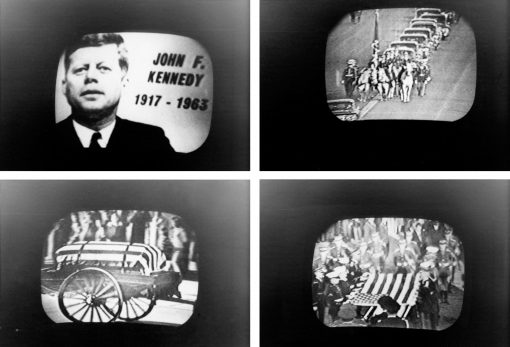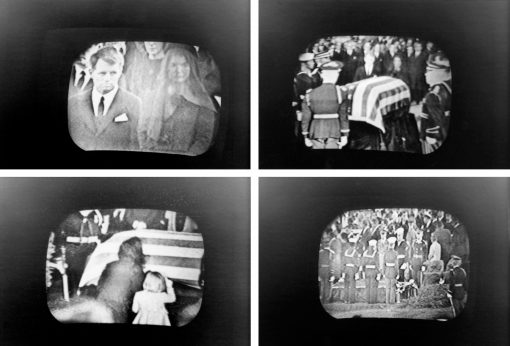Commemorating John F. Kennedy 55 years later: A look into the world through the TV
Today marks the 55th anniversary of John F. Kennedy's funeral. The American president was buried on November 25, 1963, three days after he had been the victim of a public assassination in Dallas. In the holdings of The Walther Collection is a remarkable series by an unknown photographer, who documented the television coverage of the memorial service in 87 images of a TV screen. Due to their high degree of blur and graininess, the shots convey many scenes only vaguely, but still invite us to participate in the ceremony through shaky black and white pictures. Nevertheless, the anachronism of this gesture is interesting: after generations of innovators had painstakingly developed still images into moving pictures, the photographer took a step in the opposite direction.
Presumably, the images were created on the hunch that this moment would be historic, leaving the world changed. Perhaps lacking other possibilities or means to capture, store, and archive this important event, the television viewer grabbed the camera, which, as several other "TV screenshots" in The Walther Collection prove, was not uncommon behavior before the invention of the video recorder.
The live broadcast on television allowed the photographer to follow the events of this memorable day up close, even though they were likely to be far away. As clearly as if looking out the window, they watched what was going on in Washington: how the long funeral procession of mourners, often weeping, moved slowly toward the Capitol, the carriage with the coffin covered by an American flag. And they saw Jackie Kennedy, her grief-stricken face elegantly concealed by a veil, holding her two young children by each hand.
"Electric Telescope" is originally what Paul Nipkow, who is regarded as the inventor of television, wanted to call the apparatus in 1884. The name television finally prevailed, and refers to the idea of an open window, allowing a direct view into the distance. In the 1950s, television manufacturers especially praised this quality for their products: "You really have the beautiful illusion that the screen of your receiver is a kind of window, an additional window in your home—a window that gives you a glimpse into the world." (Lambert-Wiesing 2001)
But proximity to such events of the world is only an illusion of the medium. In fact, the photographer was at home, far from the funeral ceremony—only the photographs remain as proof of their participation in it. His early death made John F. Kennedy a myth. The four-day ad-free TV broadcast following the assassination marked a sad climax in the cult around his person. At the same time, this television event provided millions of Americans with a platform for their collective mourning and outraged critical voices that denied the medium any cultural significance.
– Henriette Kriese

